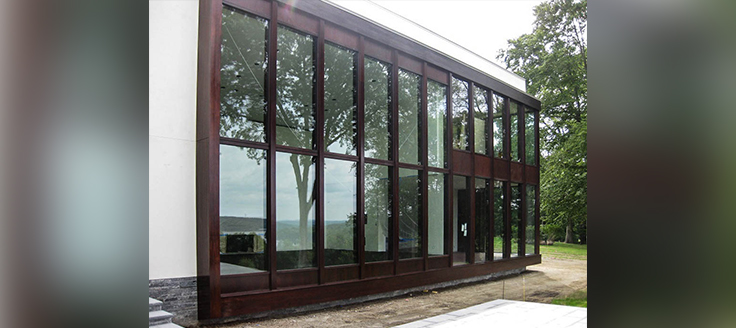Insulated Glass
Insulated glass is a combination of two or more panes of glass with a layer of inert gas namely argon or krypton in between them. The two pieces of glass are further separated by an aluminium spacer bar which has holes in it; a desiccant which might be silica gel or zeolite is used below the spacer bar material so as to absorb any moisture that may be initially present in between the glass panes. A primary sealant is used on the inside to fix the spacer bar to the inside of the glass panes while a secondary silicone sealant is used on the outside to create an airtight seal along the continuous sides of the window.
Enquire Now for Windows
This arrangement in totality is known as an IG unit or an Insulated Glass unit. The glass is available in various thicknesses ranging from 5mm to 12mm while the inert gas layer present in between the glass panes is 12mm thick.
Advantages of Insulated Glass
-
- The main advantage of insulated glass is that it helps in insulation by reducing heat gain and heat loss. Adding multiple layers of glass with gas infill further protects the windows and building from heat loss.
- Another advantage of insulated glass is that it increases energy efficiency in buildings. The reduced heat transfer lowers the electrical power consumption required for heating or cooling of the space. This drastically cuts down the electrical bills, especially in areas subjected to extreme heat or cold. The use of Low-E glass and reflective coatings can further improve the efficiency of the windows by further limiting heat transfer.
- Insulated glass also helps in sound insulation and improves the acoustics of the place. The inert gas present in between the two panes of glass does not allow noise to pass through and acts as a barrier between the interiors of the building and the noise that is present outside the building.
- There is a reduction in the amount of direct sunlight and UV rays that enter the room through the windows. This prevents the fading of photographs, paintings, curtains, carpets and sofa fabrics that can be caused by the UV effect of sun rays.
- Insulated Glass windows can also act as safety and security windows. It is difficult and takes a longer time to break an insulated glass unit in comparison to a single-pane window.
Disadvantages of Insulated Glass
- The disadvantage of Insulated glass is that it is very expensive initially. However, over a period of time, it becomes very cost-effective as it drastically helps in reducing electricity costs.
- The Insulated glass unit must be carefully sealed with a silicone sealant to prevent any leakage of the air that is present in between the glass panes. Any leakage might result in condensation and damage to the Insulated Glass unit. Once damaged the glass pieces cannot be removed and repaired because of which the whole window will have to be replaced.
Insulated glass extensively finds its use in Green buildings and plays a very important role by reducing the building’s Carbon footprint and making it sustainable.
Read the full article here














